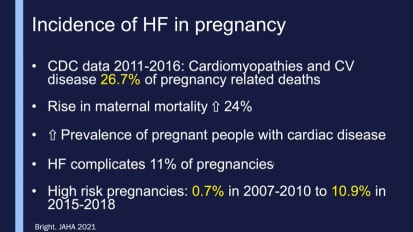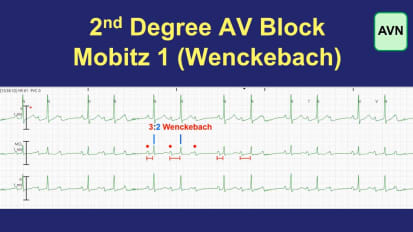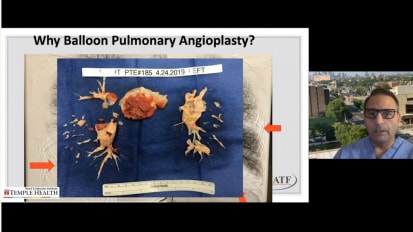Search Videos and More
 Video
Video
REBIRTH Trial: Evaluating Bromocriptine Therapy for Peripartum Cardiomyopathy
In this presentation, Dr. Deborah Crabbe, Cardiologist at Temple University Hospital and Professor of Medicine at Lewis Katz School of Medicine at Temple University, outlines the REBIRTH Trial, a randomized trial that reviews the use of bromocriptine therapy for the treatment of peripartum cardiomyopathy (PPCM) Video
Video
Earlier Detection and Treatment of Advanced Heart Failure
In this presentation, Dr. Eman Hamad, Director, Advanced Heart Failure and Transplant Program at Temple University Hospital, shares best practice approaches to physician collaboration for better patient outcomes. Document
Document
Mechanical Circulatory Support Program
Recent advances in mechanical pump design and related care have dramatically improved the daily function, health, and quality of life for patients with debilitating heart failure. Document
Document
Referral Guidelines for Advanced Heart Failure Therapy
REFERRAL GUIDELINES FOR ADVANCED HEART FAILURE THERAPY: >2 PROMPT CONSULTATION Video
Video
Multidisciplinary Group Approach to Managing Pregnant Patients with Cardiovascular Disease
Cardio obstetrics requires a multidisciplinary, patient-centered approach to managing heart failure and other cardiovascular issues in pregnant patients. Video
Video
Heart Failure with Preserved Ejection Fraction and Pregnancy
One of the most prevalent types of heart failure during pregnancy, heart failure with preserved ejection fraction and pregnancy (HFpEF), is associated with increased risk of hospitalization and adverse pregnancy outcomes. Video
Video
Heart Failure During Pregnancy
Heart failure is a complication in as many as 11% of pregnancies. However, normal cardiovascular changes during pregnancy can mimic heart failure symptoms, making it easy to misdiagnose. Video
Video
Telemetry Tips Part 4: Sinus Node Dysfunction
In this video, Dr. Joshua Cooper, Director, Cardiac Electrophysiology, Temple University Hospital, reviews patterns of sinus node dysfunction, as well as fake-outs -- including hidden ectopic beats, vagal events, and accelerated junctional rhythm. Video
Video
Telemetry Tips Part 1: Atrial Flutter and Atrial Tachycardia
Atrial flutter & atrial tachycardia with 2:1 and 1:1 AV conduction is mistakenly called "sinus tachycardia" and is often missed. Video
Video
Telemetry Tips Part 3: Electrical Artifacts
Electrical artifacts – or measured cardiac potentials that are not related to electrical activity of the heart – can mimic a wide range of arrhythmias and are seen in 100% of patients on telemetry. Video
Video
Telemetry Tips Part 2: Mobitz 1 Block vs. Mobitz 2 Block
Dr. Joshua Cooper, Director, Cardiac Electrophysiology, Temple University Hospital, takes a deep dive into distinguishing Mobitz 1 from Mobitz 2 block, specifically on if a heart block is occurring in the AV node or in the His-Purkinje system. Video
Video
Balloon Pulmonary Angioplasty (BPA) Overview
Dr. Riyaz Bashir, Director, Vascular and Endovascular Medicine at Temple Health explains the applications for Balloon Pulmonary Angioplasty, or BPA.
